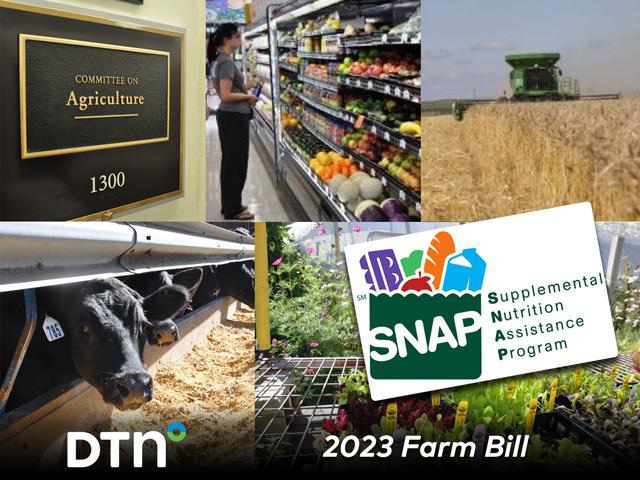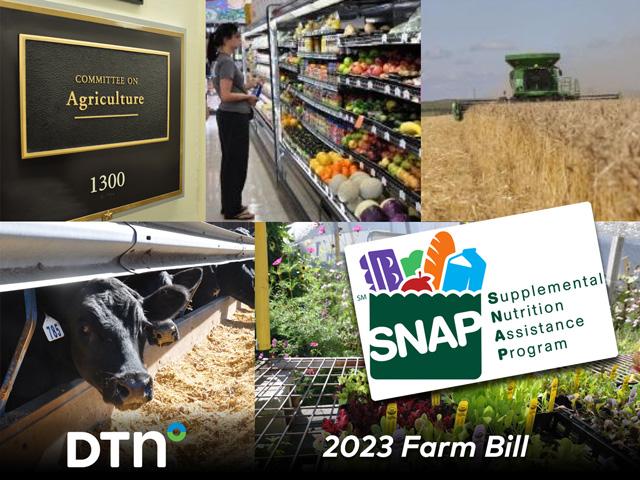Ag Policy Blog
House Ag GOP Leaders Cast Doubts About USDA's IRA Conservation Dollars
At a House Agriculture Conservation, Research and Biotechnology Subcommittee hearing Tuesday on conservation programs, House Agriculture Committee Chairman Glenn "GT" Thompson, R-Pa., and Rep. Jim Baird, R-Ind., chair of the subcommittee, raised the question of whether the Agriculture Department will be able to spend the money allocated to conservation under the Inflation Reduction Act.
As lawmakers look at the next farm bill, GOP leaders on the House Agriculture Committee keep coming back to the $19.5 billion provided for conservation programs in the Inflation Reduction Act. Republicans want to bring those dollars into the farm bill budget as well as remove rules requiring those dollars to go to efforts to lower carbon emissions or sequester carbon in the soil.
"I have serious concerns whether the department can effectively and efficiently administer an unprecedented and uncoordinated increase in funding showered on you by this administration and the past Democratic Congress," Thompson said.
Thompson added, "With the IRA funding, I believe we must have a bipartisan, bicameral discussion on the best way to administer this funding. We must admit that some of the funding is unrealistic and would be better used by bringing it into the baseline and spread out over a more realistic timeframe. I also think we must remove the climate restrictions and let the locally led model continue without limitation."
Baird said, "The Inflation Reduction Act provided significant new funding for four conservation programs with climate-specific funding requirements in place, meaning they sequester carbon or directly reduce emissions.
"Despite the initial price tag of nearly $20 billion, the Congressional Budget Office predicts that the department will spend roughly $15.3 billion over the authorized period. This funding comes on top of the $3.1 billion the administration authorized through the Climate Smart Commodities Program, which was funded by the Commodity Credit Corporation (CCC) and was created with no congressional authority.
"I believe that as we conduct our review of the 2018 farm bill's conservation title, we must examine this enormous influx in funding and how these dollars are being allocated by USDA."
Baird added, however, that he was proud to join Rep. Abigail Spanberger, D-Va., the subcommittee ranking member, in introducing the Technical Service Provider Access Act to address provider shortages.
P[L1] D[0x0] M[300x250] OOP[F] ADUNIT[] T[]
"While many conservation programs are overprescribed, additional funding can't get out the door unless we have the boots on the ground and the available technical assistance providers," Baird said.
Spanberger in her opening statement noted the new funding for conservation programs will reduce the volume of delays in getting approved for programs such as the EQIP and CSP.
"In the last year, we've made historic investments in meeting producers' demand for these programs through additional funding. This is an important step to make sure the funds are there for farmers who want to enroll in these voluntary conservation programs. Now, we need to focus on making it easier for farmers to enroll in these programs," Spanberger said.
But Natural Resources Conservation Service (NRCS) Chief Terry Cosby and Farm Services Agency (FSA) Administrator Zach Ducheneaux testified in detail on how they are planning to spend the money Congress has provided their agencies.
In his written testimony, Cosby said, "To effectively implement the provisions of IRA, NRCS is developing strategies to expand capacity through hiring, target funding, streamline program delivery, leverage partnerships, advance equity, and quantify outcomes. As part of this effort, NRCS published a Federal Register Request for Information (RFI) in the fall of 2022, requesting public input on various aspects of IRA implementation. Through the RFI, NRCS solicited feedback on how to maximize benefits for climate mitigation, streamline and improve program delivery to increase efficiencies, and expand program access for producers, especially underserved producers."
Most members of the subcommittee asked about programs of particular importance to their district, but there was considerable discussion about the difficulties in recruitment of employees for both agencies.
Cosby said NRCS has 10,600 employees and needs to hire 3,000 people over the next few years. He said one problem in recruiting technical staff is that some schools have dropped a soils class that is a requirement for some positions. Cosby said he has been working with the 1890 land-grant schools and Hispanic-serving institutions to offer the course but that it is a matter of money and the need for laboratories.
Ducheneaux said there has become a stigma attached to federal employment and there is a need to "brag on our county staff" rather than talk about them as part of federal bureaucracy.
Asked by Rep. Mary Miller, R-Ill., for his views on the placement of solar panels on prime farmland, Cosby said USDA has no position on that issue or on the conversion of farmland for other uses.
Rep. Mark Alford, R-Mo., noted that he had recently organized a letter to President Biden and Agriculture Secretary Tom Vilsack criticizing White House climate envoy John Kerry's remarks about farmers at the AIM for Climate Summit and asked why farmers don't get credit for what they do.
Ducheneaux said that, at USDA, "I think we are giving the proper credit." Ducheneaux and Cosby both said farmers need the proper tools and technical assistance for conservation.
DTN Ag Policy Editor Chris Clayton contributed to this report.
The full hearing can be watched at https://agriculture.house.gov/…
Jerry Hagstrom can be reached at jhagstrom@nationaljournal.com
Follow him on Twitter @hagstromreport
(c) Copyright 2023 DTN, LLC. All rights reserved.






Comments
To comment, please Log In or Join our Community .